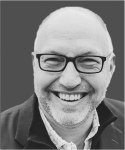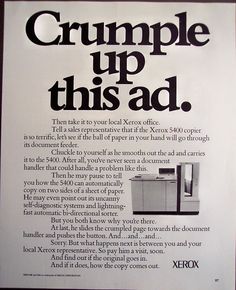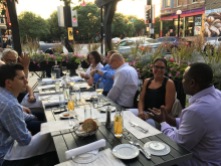On July 21, 2016, the authors recorded a select group of expert practitioners, academics and entrepreneurs to inform our research. To each of our interviewees profiled below, we would like to express our gratitude for the gift of your time and insight. We are honored to have enjoyed a most exciting day of conversations with you, captured for both research and posterity. We are also grateful to our hosts at Manifest for providing our local studio.

Purpose
The co-authors share a vision—experienced in the frenetic race of Silicon Valley startups, and observed within the ivory towers of global industrial corporations. Our views coalesce around the changes already underway in rapidly transforming competitive markets. These changes suggest that winning organizations of the future must look and act differently to prosper in an ever smaller, flatter, faster world.
Our Job
We will listen to your stories and probe for specific experiences. We will add your data points to our secondary research, much reading, and other hard evidence, to ultimately determine which new attributes, behaviors or combinations of capabilities will best equip companies to thrive amid the changes of the coming quarter century.
Your Job
Your mission, should you choose to accept it, is simply to share your stories. We need tales from your experience. The more specific, fact-based and personal, the better.
Please help us fight the urge to generalize or prognosticate. Without data, we’re just speculating. That comes later, once we have hard data to inform our thinking.
If we do happen to wander down that path, please expect that we will ask your help to interrogate your views: Why do you believe that? Where have you seen it in action? What happened? Who made that decision? Who was affected? Why?

Tell us Your Stories
For example, our last interview Thursday is with a legend in the innovation field, Larry Keeley. Larry has generously shared his expertise as a mentor to students and professionals for nearly four decades, including a number of the experts assembled here. I am singularly indebted to Larry for the pivotal role he played in my own career.
Early in our relationship, Larry regaled me with a story that told volumes.
1979: Xerox Meets the Future

Whisk your way back, if you’re old enough to enjoy the ride, to the wide collars and wider ties of 1979. Young Larry Keeley – probably looking a lot like Bill Gates in that same era – on practically his first day on the job with legendary industrial designer and cofounder Jay Doblin, arrived at the gleaming headquarters of Xerox, their dominance of a new industry cemented; their star on the rise.
The quorum of all white, all male, all pocket-protected senior engineers gathered to hear these innovation gurus tell them about the future of photocopying—a method and science to which they were so wedded, that the accepted term was “xerography”. (Imagine advising Kleenex on the future of kleenexing).
Larry did not tote along the conventional 40-pound pile of overhead slides (yes, those were a thing). Instead he carried a small carton, cheaply emblazoned with indecipherable kanjii characters, from which he withdrew, voila, a strange hollow plastic toy. He called it a Canon Personal Copier. Behold, the future, straight from the country where “Made in Japan” still meant cheap souvenirs and crappy tin cars!
Even as he plunked down the gray cube in the center of the boardroom table, muted snickers tittered from the edges of the group. Larry plugged it in; chortles accompanied the feeble whir, like a wheezing vacuum cleaner building up a head of steam.
Extending an arm to the amused audience, like a magician Larry asked if he might borrow a document. He thanked the engineer who pried at a staple and handed over a single typed memo. Larry raised the thin plastic lid, gently laid the page face-down on a glass surface. He pressed one large button. Slowly, with the speed and quality of a dot matrix printer, a duplicate edged out, line by line, from the bottom of the plastic box.
The exhausted contraption finally sighed as it spit out the last edge of a new page. The most senior and severe engineer snatched up the warm sheet and raised it to the light. He glared through the translucent husk. Then he slapped it down and pinned it to the table with his splayed fingers. And with his thumbnail he scraped at the ink, coming away with a smudge and a smirk.
“Hah!”, he beamed as he tossed it aside. A mere toy, terrible quality, nothing to learn here.
Meanwhile, around the globe, thousands of toner-stained Xerography-certified repair reps responded to their pagers like surgeons summoned to the emergency room. They scurried to replace industrial canisters of toner, like oil drums embedded in the dense mechanical complexity of eight and 12-foot sheet metal cubes. Whole print rooms had been reengineered around this miracle of hardware and powder and power. (Larry describes how the most advanced of these monsters practically swallowed sequoias in a log chipper on one end and spit out a stack of perfectly bound manuscripts on the other.)
Is it any wonder that all these workers believed they held unassailable careers at the pinnacle of modern technology?
But what of the customer? At this stage, the marvel of new technology still held sway. New buyers raved about the speed and quality and productivity they received from their huge investment in Xerox, just as their brethren in IT raved about their own rooms of hot metal boxes, stamped IBM. Only if you probed deep, into the night shift at the print room, might you hear the first glimmer of looming change – the first hint at the beginning of the end.
“Fantastic technology. But wow, it is really expensive. I can’t really afford to use it unless I’m doing a huge print run.” (~ Could it be cheaper?)
“You know, somehow they always seem to break down right when we’re on a killer deadline.” (~ Could it be more reliable?)
“Oh man, they are crazy complex. I couldn’t possibly afford to hire my own techs to keep them up and running. They’d need a PhD in xerography!” (~ Could it be simpler?)
We all know the rest. The future would not in fact belong to Xerox, any more than digital photography would belong to Kodak. In fact some years later, as the digital threat loomed, Xerox reinforced their narrow understanding of the paperless future by proudly redubbing themselves THE Document Company.
Nor would the meek plastic box from Japan inherit the earth, although Canon would survive and grow its electronics business where countless other new entrants failed.
The future, the inevitable march to better, faster, cheaper solutions, was revealed in that single smear of powdered ink, a simple smudge on the thumb of the man who knew it presented no threat. This only proved that his place at the apex of document technologies held secure.
 Clayton Christensen brilliantly captured this phenomenon, observed in his own work in the disk drive industry two decades later. The Innovator’s Dilemma confronts us all. Like the funeral bell’s mournful chime in John Donne’s fateful 16th century poem, ask not for whom the bell tolls. It tolls for thee.
Clayton Christensen brilliantly captured this phenomenon, observed in his own work in the disk drive industry two decades later. The Innovator’s Dilemma confronts us all. Like the funeral bell’s mournful chime in John Donne’s fateful 16th century poem, ask not for whom the bell tolls. It tolls for thee.
We recognize, as observed by science fiction novelist William Ford Gibson, that “the future is already here, it’s just unevenly distributed“. So we are exploring writings, data and interviews with experts and thoughtful practitioners like you to uncover and start to connect those bits and pieces of the future that have begun to emerge.
With your stories we will explore the path to the future, and its impediments, in a real and grounded context. Your stories and examples provide the tangible evidence to draft a blueprint for the Renaissance company of the near future.

As a working title for the research phase of our book, we have dubbed it The Da Vinci Co, reflective of our early hypotheses that success may be predicated on a more fully-formed organization, one that merges the creative with the concrete, art with science, lofty imagination with tactical rigor. These organizations are more likely to expect change to sneak up from unexpected places. They will know how to watch, how to ask, how to anticipate, and ultimately, how to invent their own future.
For more on the importance of this investigation, we welcome your comments on our purpose, and at a more personal level, for Dave and Roger respectively.
Authors
Dave Hersh
 Dave is a cofounder of Zag Partners, to help early stage companies earn market traction and scale fast. As founding CEO of Jive, he took a humble open-source project with two coders, a bit of shareware, and zero revenue and built it into a commercial breakout, a fast growing $60MM corporate infrastructure company by the time he rang the NASDAQ bell at Jive’s IPO. After catching a breath and reacquainting himself with his supportive but only vaguely familiar family, Dave served as a Board Partner at Andreessen Horowitz, and teaches and coaches entrepreneurs-in-the-making at Stanford’s Business School. Dave launched his professional career, and met his future bride, artist April Parker, working with co-author Roger Mader in the Chicago office of their consultancy, VIA, in the mid-1990s. Dave and his family live in the Bay area. See his latest thoughts on life, leadership and entrepreneurial endeavors at davehersh com.
Dave is a cofounder of Zag Partners, to help early stage companies earn market traction and scale fast. As founding CEO of Jive, he took a humble open-source project with two coders, a bit of shareware, and zero revenue and built it into a commercial breakout, a fast growing $60MM corporate infrastructure company by the time he rang the NASDAQ bell at Jive’s IPO. After catching a breath and reacquainting himself with his supportive but only vaguely familiar family, Dave served as a Board Partner at Andreessen Horowitz, and teaches and coaches entrepreneurs-in-the-making at Stanford’s Business School. Dave launched his professional career, and met his future bride, artist April Parker, working with co-author Roger Mader in the Chicago office of their consultancy, VIA, in the mid-1990s. Dave and his family live in the Bay area. See his latest thoughts on life, leadership and entrepreneurial endeavors at davehersh com.
Roger Mader
 Roger is a founding partner of Ampersand, growth advisors in applying the emerging sciences of design at enterprise scale. He teaches innovation strategy in the Masters Interaction Design program at SVA. He writes extensively on these themes at rogermader.com, and is excited to bring the insights from our experts to a larger audience. Roger led global accounts and commercial strategy for innovation specialists Doblin Group and Fahrenheit 212. He developed Americas strategy and launched and led new businesses for EY. In the 1990s he cofounded VIA and helped grow the consultancy from a few wild-eyed youths to 100 case-hardened consultants in four offices around the world. He began his career at Accenture, after an internship with IBM to help launch an odd metal box called The PC. He a leads a non-PC life with his family in lower Manhattan.
Roger is a founding partner of Ampersand, growth advisors in applying the emerging sciences of design at enterprise scale. He teaches innovation strategy in the Masters Interaction Design program at SVA. He writes extensively on these themes at rogermader.com, and is excited to bring the insights from our experts to a larger audience. Roger led global accounts and commercial strategy for innovation specialists Doblin Group and Fahrenheit 212. He developed Americas strategy and launched and led new businesses for EY. In the 1990s he cofounded VIA and helped grow the consultancy from a few wild-eyed youths to 100 case-hardened consultants in four offices around the world. He began his career at Accenture, after an internship with IBM to help launch an odd metal box called The PC. He a leads a non-PC life with his family in lower Manhattan.
Host
8:30am Kelly Costello
 Our generous host serves as the Head of Design Research for Manifest in their Chicago Studio. Kelly led primary research for her own firm, Panorama, and with Ampersand, and at Doblin, where she and Roger worked, traveled and laughed together closely. She charms with all the cultivation of a southern belle, despite something of a Scarlett OHara rise from the ashes from what sounds like a tornado-tossed trailer park childhood. Kelly is a trusted leader in the logic and leadership of primary research as she constantly pushes to reinvent it for deeper insight, broader reach, and greater precision. She graduated from and serves as adjunct faculty at Chicago’s Institute of Design, and teaches Design Thinking at the School of the Art Institute of Chicago, SAIC.
Our generous host serves as the Head of Design Research for Manifest in their Chicago Studio. Kelly led primary research for her own firm, Panorama, and with Ampersand, and at Doblin, where she and Roger worked, traveled and laughed together closely. She charms with all the cultivation of a southern belle, despite something of a Scarlett OHara rise from the ashes from what sounds like a tornado-tossed trailer park childhood. Kelly is a trusted leader in the logic and leadership of primary research as she constantly pushes to reinvent it for deeper insight, broader reach, and greater precision. She graduated from and serves as adjunct faculty at Chicago’s Institute of Design, and teaches Design Thinking at the School of the Art Institute of Chicago, SAIC.
Experts
(With our apologies for any misinterpretations in our snapshot bios, though nobody suffers Kelly’s fate, above)
9am Raghu Marwaha
 CEO of Marwaha Group, Subway Development Company, which owns, develops and operates the franchise licenses for much of Southern California. Subway founder Fred DeLuca was like a second father to Raghu’s family, and the many other owners whose success draws a straight line back to the democratized business model DeLuca promoted, sharing his own American Dream story. DeLuca’s sister Suzanne Greco has taken the helm in the transition following her brother’s premature passing last year. As the business pivots to a fresh new brand, stabilizes and returns to growth, Subway relies on Raghu and Marwaha Group to lead the way – to innovate for the next generation of the world’s largest restaurant franchise.
CEO of Marwaha Group, Subway Development Company, which owns, develops and operates the franchise licenses for much of Southern California. Subway founder Fred DeLuca was like a second father to Raghu’s family, and the many other owners whose success draws a straight line back to the democratized business model DeLuca promoted, sharing his own American Dream story. DeLuca’s sister Suzanne Greco has taken the helm in the transition following her brother’s premature passing last year. As the business pivots to a fresh new brand, stabilizes and returns to growth, Subway relies on Raghu and Marwaha Group to lead the way – to innovate for the next generation of the world’s largest restaurant franchise.
10am Tony Bynum
 Tony leads client innovation strategy for RTC. His thoughtful leadership advances retailers’ connection with the market and relevance to individual customers. Tony guides ground-breaking research on the future of consumer behavior and consumption. In his prior work Tony specialized in workspace design with Gensler. Tony also serves as adjunct faculty with Chicago’s IIT Institute of Design and as a visiting professor for the graduate research program at CEDIM México.
Tony leads client innovation strategy for RTC. His thoughtful leadership advances retailers’ connection with the market and relevance to individual customers. Tony guides ground-breaking research on the future of consumer behavior and consumption. In his prior work Tony specialized in workspace design with Gensler. Tony also serves as adjunct faculty with Chicago’s IIT Institute of Design and as a visiting professor for the graduate research program at CEDIM México.
11am Melissa Lemberg
 Melissa serves as Manifest’s Regional President for the Pacific, having recently joined from IBM Interactive Experience as the Global Partner for customer experience strategy and digital transformation. Her clients have included Etihad, Hertz, American Airlines and Daimler. Before that she served as SVP, Client Engagement at Razorfish, with an emphasis on the transportation sector. She leads teams at Manifest to produce end-to-end solutions in digital transformation and customer experience strategy.
Melissa serves as Manifest’s Regional President for the Pacific, having recently joined from IBM Interactive Experience as the Global Partner for customer experience strategy and digital transformation. Her clients have included Etihad, Hertz, American Airlines and Daimler. Before that she served as SVP, Client Engagement at Razorfish, with an emphasis on the transportation sector. She leads teams at Manifest to produce end-to-end solutions in digital transformation and customer experience strategy.
12pm Ryan Pikkel
 Ryan serves as a design strategist an researcher through the lifecycle of programs at Doblin: research, analysis, synthesis, and illustration. His teams employ a broad range of methods to develop and articulate solutions empathetic to both end users and those who implement them. His designs communications by plumbing audience needs and aspirations to to craft more compelling messages, many award-winning in Chicago, New York, Hong Kong, and Cleveland. He helped McDonald’s Innovation Center to infuse their next-generation restaurant development with design thinking and methodologies.
Ryan serves as a design strategist an researcher through the lifecycle of programs at Doblin: research, analysis, synthesis, and illustration. His teams employ a broad range of methods to develop and articulate solutions empathetic to both end users and those who implement them. His designs communications by plumbing audience needs and aspirations to to craft more compelling messages, many award-winning in Chicago, New York, Hong Kong, and Cleveland. He helped McDonald’s Innovation Center to infuse their next-generation restaurant development with design thinking and methodologies.
1pm Jeff Semenchuk
 Until he stepped down recently, Jeff served as Chief Innovation Officer at Hyatt (past 5 years), before that Citi, and before that Pfizer Consumer. That’s a remarkable trifecta, the first executive to hold the new title in icons of each of three very different industries. You have him to thank for your Listerine Pocket Pack, among many less obvious but more important innovations. He is in final negotiations for his next big position in yet a fourth industry sector, unprecedented in our experience, a sign of the growing recognition of user-centered research and design and the methods of innovation as an essential core competence, migrating from art, to science to function.
Until he stepped down recently, Jeff served as Chief Innovation Officer at Hyatt (past 5 years), before that Citi, and before that Pfizer Consumer. That’s a remarkable trifecta, the first executive to hold the new title in icons of each of three very different industries. You have him to thank for your Listerine Pocket Pack, among many less obvious but more important innovations. He is in final negotiations for his next big position in yet a fourth industry sector, unprecedented in our experience, a sign of the growing recognition of user-centered research and design and the methods of innovation as an essential core competence, migrating from art, to science to function.
2pm Tom Mulhern
 As Chief Innovation Officer at Datu Health, Tom dedicates his team to accelerated adoption of new behaviors in healthcare: personalized, connected, accountable. He led the Trans-design team at Gensler, merging strategy, design, brand, research and analytics. He cofounded research firm Conifer, and led brand strategy for VSA. Tom’s notoriously articulate intelligence was honed while leading breakthrough innovation teams at Doblin.
As Chief Innovation Officer at Datu Health, Tom dedicates his team to accelerated adoption of new behaviors in healthcare: personalized, connected, accountable. He led the Trans-design team at Gensler, merging strategy, design, brand, research and analytics. He cofounded research firm Conifer, and led brand strategy for VSA. Tom’s notoriously articulate intelligence was honed while leading breakthrough innovation teams at Doblin.
3pm Pam Nyberg
 Having worked in both consulting and corporate design environments for many years, At Humana, Pam is dedicated to helping the healthcare insurer to understand what’s meaningful to people and then shaping compelling experiences to enhance their lives, while also generating positive business results. She began her career applying human factors and human-centered design research for national and international markets, at 20th century icons including Whirlpool, Procter & Gamble, and Newell Rubbermaid. Pam explores behavioral economics—how incentives can motivate behavioral change—and the potential applicability of developing market innovations in developed countries.
Having worked in both consulting and corporate design environments for many years, At Humana, Pam is dedicated to helping the healthcare insurer to understand what’s meaningful to people and then shaping compelling experiences to enhance their lives, while also generating positive business results. She began her career applying human factors and human-centered design research for national and international markets, at 20th century icons including Whirlpool, Procter & Gamble, and Newell Rubbermaid. Pam explores behavioral economics—how incentives can motivate behavioral change—and the potential applicability of developing market innovations in developed countries.
4pm Simon Goodship
 As Manifest Chief Experience Officer, Simon leads one of the largest experience design teams in the Midwest, over 65 visual designers, writers, content strategists, UX designers, and user researchers. His 25 years of experience as a design leader cuts across platforms: social media, mobile, and applications; new media and old. The glint in his eye belies a crafty Welshman; insight wrapped in a mischievous sense of humor. Simon tackled early tech design for the first touch screen interfaces, clunky chunky Motorola equipment – but a progenitor of the coming screen age.
As Manifest Chief Experience Officer, Simon leads one of the largest experience design teams in the Midwest, over 65 visual designers, writers, content strategists, UX designers, and user researchers. His 25 years of experience as a design leader cuts across platforms: social media, mobile, and applications; new media and old. The glint in his eye belies a crafty Welshman; insight wrapped in a mischievous sense of humor. Simon tackled early tech design for the first touch screen interfaces, clunky chunky Motorola equipment – but a progenitor of the coming screen age.
 President, and co-founder of Doblin Group, Larry is the author of the much-referenced Ten Types of Innovation. He circles the globe to impart over three decades of insight into effective innovation methods. His firm pioneered comprehensive systems to materially boost innovation success rates. A legend among the original faculty at the IIT Institute of Design, Larry also teaches at the Segal Design Institute at Northwestern University and as a guest lecturer at graduate programs on four continents. Google the man for an array of compelling video lectures and and TED talks.
President, and co-founder of Doblin Group, Larry is the author of the much-referenced Ten Types of Innovation. He circles the globe to impart over three decades of insight into effective innovation methods. His firm pioneered comprehensive systems to materially boost innovation success rates. A legend among the original faculty at the IIT Institute of Design, Larry also teaches at the Segal Design Institute at Northwestern University and as a guest lecturer at graduate programs on four continents. Google the man for an array of compelling video lectures and and TED talks.
Appreciation Dinner
Again, thank you.
Dinner was hosted on a steamy Wednesday July 20 Gemini Bistro in Lincoln Park, dining al fresco.
It is quite literally true that we could not do this without you. Appreciatively,
Roger & Dave
Follow Up Interviews
We hope to schedule follow ups with the following experts.
Henry King, AKA Man of String
 An old friend and the engaging author of the business theory of Invasive Species and the Man of String blog, this senior advisor and engaging polymath merges art and science in principle and practice. After a tour with innovation strategy specialists at Doblin (a shared career node for several of us), Henry worked on innovation offerings for Leo Burnett and this week joins the Chicago team at Salesforce, complete with new haircut. Henry lectures on Architecture & Designed Objects at the School of the Art Institute of Chicago.
An old friend and the engaging author of the business theory of Invasive Species and the Man of String blog, this senior advisor and engaging polymath merges art and science in principle and practice. After a tour with innovation strategy specialists at Doblin (a shared career node for several of us), Henry worked on innovation offerings for Leo Burnett and this week joins the Chicago team at Salesforce, complete with new haircut. Henry lectures on Architecture & Designed Objects at the School of the Art Institute of Chicago.
Scott Wilson
 Scott is the hands-on designer and entrepreneur who founded and leads design for MINIMAL (MNML), a product and brand incubation studio. He received the Smithsonian Cooper-Hewitt National Design Award, a TIME Magazine’s Top 100 Designer and one of Fast Company’s Most Influential Designers as well as one their Most Creative People in Business. He garnered international acclaim for his firm and community funding site Kickstarter with his breakout hit, the 2010 TikTok+Lunatik project. Scott served as Global Creative Director for Nike, and designed products at Ideo, Motorola and Thomson Electronics.
Scott is the hands-on designer and entrepreneur who founded and leads design for MINIMAL (MNML), a product and brand incubation studio. He received the Smithsonian Cooper-Hewitt National Design Award, a TIME Magazine’s Top 100 Designer and one of Fast Company’s Most Influential Designers as well as one their Most Creative People in Business. He garnered international acclaim for his firm and community funding site Kickstarter with his breakout hit, the 2010 TikTok+Lunatik project. Scott served as Global Creative Director for Nike, and designed products at Ideo, Motorola and Thomson Electronics.
Susie Hultquist
 Susie co-founded and serves as the CEO of Spokin, the mobile first platform that quickly and privately connects consumers navigating health issues, a passion that serves us all well. Before launching her startup Susie managed asset portolios for Columbia Wagner Asset Management and as an analyst with Banc of America Securities and Continental Illinois Venture Corp. She is also a co-founder of FARE Chicago, for Food Allergy Research & Education.
Susie co-founded and serves as the CEO of Spokin, the mobile first platform that quickly and privately connects consumers navigating health issues, a passion that serves us all well. Before launching her startup Susie managed asset portolios for Columbia Wagner Asset Management and as an analyst with Banc of America Securities and Continental Illinois Venture Corp. She is also a co-founder of FARE Chicago, for Food Allergy Research & Education.
Pete Wendel
 Pete Leads product and service innovation using evidence-based design, a method that delivers a return on investment via a return on behavior. As leader of UX strategy and design for Walgreen’s Personalization & CRM group, he and his teams promote customers’ health through services, programs and products designed to help them make better choices: for saving money, feeling better, and caring for others.
Pete Leads product and service innovation using evidence-based design, a method that delivers a return on investment via a return on behavior. As leader of UX strategy and design for Walgreen’s Personalization & CRM group, he and his teams promote customers’ health through services, programs and products designed to help them make better choices: for saving money, feeling better, and caring for others.
Kim Irwin
Chris Conley













